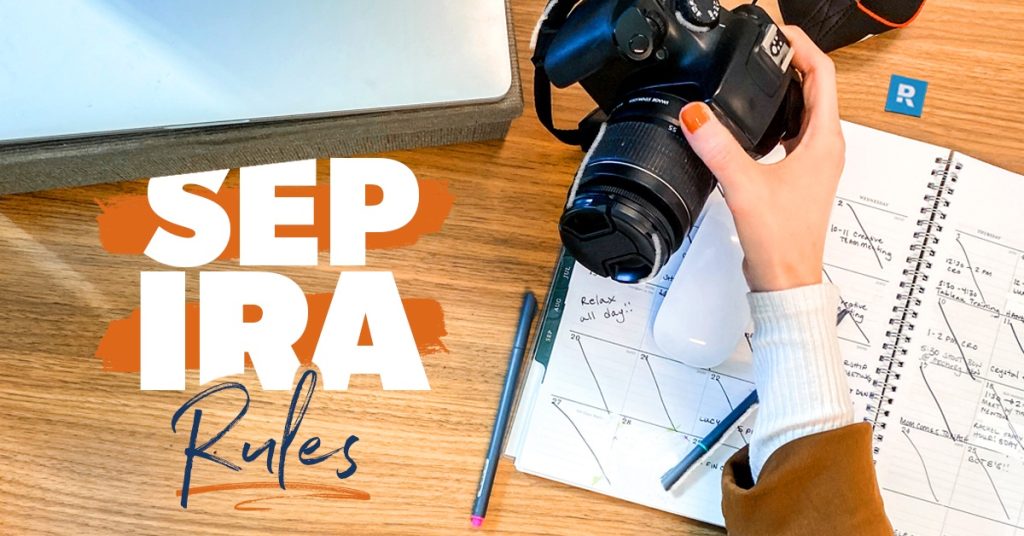So, you’re killing it as your own boss, or you’re part of the backbone of the American economy working at a small business. You’ve got your business or career plan in place—but what about your retirement plan? Are there options out there for you?
Don’t worry, there are—and one you’ll want to know about is the SEP IRA. That stands for Simplified Employee Pension Individual Retirement Account, and it lets self-employed folks and small businesses create retirement savings plans that are tax-deferred accounts and work like traditional IRAs. This opens up an option for companies with small teams—or a team of one—who likely wouldn’t be able to offer other types of retirement plans because of the complicated setup and high administrative costs.
How Do SEP IRAs Work?
With a SEP IRA, employers make tax-deductible contributions on behalf of eligible employees. That’s one big difference from other retirement plans—only the employer contributes to the plan. So, if you’re an employee and your employer offers this—we’re talking free money! SEP IRAs come with some advantages like easy setup, higher annual contribution limits, and contributions that are immediately vested—meaning it’s your money from day one. So how do you know if you’re eligible?
For once, the answer to this one is pretty straightforward. There are three simple things that qualify you to participate in a SEP IRA:
- You’re 21.
- You’ve worked for the employer (or have been self-employed) at least three of the last five years.
- You receive a minimum of $750 from the employer during the year.1
Because SEP IRAs vest immediately, the employee owns and controls their account from day one. Now, employers (or self-employed folks) need to keep an important contribution requirement in mind if they decide to go with a SEP IRA: If you have employees who are eligible to participate, you must contribute for them and the contributions have to equal the same percent of salary for each participant, including the employer. However, the company is not locked into contributing annually. So, deciding to contribute, or how much to contribute, can change each year. Speaking of contributions . . .
What Are SEP IRA Contribution Limits?
Contribution limits are a huge difference-maker for the SEP IRA. For 2024, employer contributions can’t be more than 25% of an employee’s salary or a max of $69,000, whichever is less.2
Let’s do some quick math. For a traditional IRA in 2024, your max contribution is $7,000 ($8,000 if you’re 50 or older).3 If your employer contributed up to the max for your SEP IRA, that could be about eight or nine times the annual limit of a traditional IRA.
Another bonus if you’ve got a SEP IRA is that you can still contribute to another IRA. The employer contributions from a SEP IRA don’t count toward any of your contributions to a Roth or traditional IRA. If you’re contributing to a SEP IRA and your own, just be sure you’re getting with an investment pro to get a solid game plan in place and stay up on any requirements that apply to your situation.
What Are the Tax Implications of a SEP IRA?
When it comes to tax deductions, SEP IRAs offer you and your employees a tax-favored way to save for retirement. As the employer, you can deduct contributions you make to the plan for your employees, but the deductions can’t be more than 25% of all participants compensation.4 You can also deduct fees from the company managing the plan if contributions to the plan don’t cover them. Earnings on the contributions are generally tax-free until you or your employees receive distributions from the plan.
Market chaos, inflation, your future—work with a pro to navigate this stuff.
If you’re self-employed, you can make your yearly contributions up to the tax filing due date—and that includes extensions.5 So, you can keep making contributions until April of the following year, or until October 15 if you file an extension. You can also deduct contributions you make to the plan for yourself.
What Else Do I Need to Know About SEP IRAs?
Like other traditional retirement accounts, there are a lot of details to think about with SEP IRAs. First, like traditional IRAs, you’re able to start taking distributions after age 59 1/2—but you’re required to start taking minimum distributions starting at 73. And since the plans are funded with pretax dollars, you’ll be required to pay taxes on those distributions in retirement. But any withdrawals you make before 59 1/2? Those are taxed as income and come with a 10% penalty.
Like 401(k)s and IRAs, SEP IRAs let the employees manage the investment decisions inside the plan. The trustee—the investment company that holds the plan’s assets—just determines eligible investments and handles all the boring stuff, like managing contributions, providing annual statements, and filing all the paperwork with the IRS.
Unfortunately, unlike more traditional options, there are no catch-up contributions for people who are 50 or older with a SEP IRA. But it’s not all bad news—the Secure Act 2.0 that was passed in late 2022 introduced a Roth option for SEP IRAs. This is great news for small-business owners and their employees, who now have the option to invest with after-tax dollars and enjoy the benefits of tax-free growth and withdrawals through their workplace plans.
Get With a SmartVestor Pro
There’s no getting around it—retirement accounts of any kind have a lot of bells and whistles. But you’ve got this! And you don’t have to do it solo. Get with an investment professional like a SmartVestor Pro to lay out a retirement plan for your situation. Our SmartVestor program makes it easy to find a pro who knows what we recommend and can help you create a retirement plan with your goals in mind.
Find a SmartVestor Pro in your area today!
This article provides general guidelines about investing topics. Your situation may be unique. To discuss a plan for your situation, connect with a SmartVestor Pro. Ramsey Solutions is a paid, non-client promoter of participating Pros.
Read the full article here










